Powderfinger 2003/2004
Powderfinger returned home to tour Australia after a very successful tour of Europe and UK. They brought the biggest version of their show to date. The arena sized show might be a major step up for the band, but the show has been translated to the big stage quite successfully by the team behind the production.
Dates
November 21, 23, 25-27, 29-30 2003
December 5-7, 10, 12-15 2003
System
24 x Nexo Geo T 4805 Array
6 x Nexo Geo T 2815 Array
12 x Nexo Cd-18 Ultra Subs
20 x Camco Vorte x 6 Amps
4 x Nexo Nx241 Processors
Side Hang
8 x Nexo M3 Mid-High
8 x Nexo B1 Bass Cabinets
8 x Camco Vorte x 6 Amps
2 x Nexo Nx241 Processors
Infill
4 x Nexo Alpha E-M
1 x Camco Vorte x 6 Amp
1 x Nexo Nx241 Processor
FOH
Midas Heritage H3000
52 Channel Console
1 x Al Smart C1 Compressor
1 x Klark Teknik Dn 360 Eq
1 x Lexicon Pcm 91
2 x Lexicon Pcm 80
1 x Tc M 5000
1 x Tc 2290
2 x Tc D-Two
2 x Eventide H3000 SE
2 x Empirical Labs Harmonisers
Distressors
7 x DBX 160 Compressors
1 x Al Smart C1 Compressor
8 Ch Drawmer 201 Gates
4 Ch Db x 903 Compressors
2 x Avalon Vt 737 Sp Mic
Monitors
1 x Midas Xl250 52 Channel Console
8 x Klark Teknik Dn 360 Eq
1 x Tc M2000
8 Ch BSS Dpr 402
Compressors
8 Ch Drawmer 201 Gates
16 x Nexo PS 15 Wedges
8 x Nexo M3 Mid-High
Side Fill
8 x Nexo B1 Bass (Side Fill)
12 x Camco Vorte x 6 Amps
6 x Nexo Td Mkii Processors
2 x Nexo Nx241 Processors
Multicore System
Optocore L x 4 Network
Powderfinger Crew List
Production Manager: Ifan Thomas
Production Assistant: Oana Gilbert
FOH: Mark McElligott
Monitors: Steve Brown
LD: Jason Boyd
Stage Manager/ Matt “Matrix”
Backline: McNamara
Drums: Duane Billings
Guitars: Chris “Toph” Hough
Johnston Audio Crew
FOH Rigger: Drew Menard
System rigger: Paul Gould
Monitor Rigger: Mark Crawley
About the Audio – CX Magazine Article (January 2004)
Mark McElligott is not a fan of Line Array systems, so it must have taken some convincing to get him to use the new Tangent Array system from Nexo. His close relationship with Johnston Audio and previous reliance on the Nexo Alpha system probably had a great deal to do with the decision. From Mark’s point of view, the Alphas were perfect for this band.
“They still have that rock pedigree. The guitars sound like guitars. Not like Line Arrays – off axis they sound like shit.” The “clean, pristine” sound with little bottom end is not what Mark needed, so he was initially skeptical about the Nexo GeoT Tangent Array. However, after hearing the system in Brisbane during rehearsals for the tour, he decided to take a punt. The result has been very impressive sound for this tour. He said it took him a couple of shows to get used to the clarity and spread of the sound. “You hear the PA as one unit, they don’t sound like they are split up.” This is despite the fact that the subs are sitting in front of the stage and the main PA is set so high. The Nexo system is also capable of flying the Subs with the main PA, something that Mark would have liked to have done so that the front rows of punters were not flattened by the sound. However the hardware needed was not available by the time the show was underway, and standing in the front row in front of the PA subs wasn’t all that bad – in fact the audio quality there was exceptionally good!
Coming from a studio background, Mark likes heavy use of compression in his live mix. The drum kit runs a special system of hard compression that is run back in the console and mixed with the live output. It probably runs about 50/50 compressed audio to live audio, which Mark describes as giving the kit some real punch. There is also lighter compression run over the Guitars and the whole mix output.
The mics run into Avalon SPS727 valve based mic preamps – giving the vocals the warmth that Mark likes to hear in the vocal mix. Running with a slew of other effects – gates, reverbs, harmonizers, distressors (see list), this is a reasonably complex rig that Mark runs from the Midas Heritage H3000 console.
Interestingly, Mark also uses a baby Allan and Heath 16ch console – one that would be more at home in a pub – for the small ‘acoustic style’ section. The idea is to give this part of the gig a different sound – which it certainly does.
Another interesting part of this gig is that the FOH is connected to the stage via fibre optic cable rather than a traditional multicore. The Optocore LX 4 Network System allows for 48 channels of audio to be sent from the stage and 16 returned to the stage, all without signal loss and for a seriously long distance if required. The stage end of the system incorporates a remote controllable head end with built in mic preamps, remote switchable phantom power and even some data transfer.
There are two RS485 returns from the FOH position which can be used for DMX or AES/EBU outputs, as well as a video send from the stage. A laptop at FOH controls the system, allowing the user to control master level for system balancing as required.
How Mark McElligot got started
Like many FOH engineers, Mark McElligott was a musician first until he saw the light and the employment prospects.
A native of Townsville, Mark managed to get himself into Brisbane after lying about his abilities as an engineer to a covers band that needed an urgent replacement.
Apparently there was enough native talent that he pulled off the gig without the band noticing – and thus started a career in studio and live engineering.
Mark comes from the days when Brisbane had a vibrant live scene, and the bands used to occupy what is affectionately remembered as “The Target Building” – a disused Target store in Fortitude Valley that was taken over for a number of years in the eighties by Brisbane’s up and coming bands. This was a period of excitement for Mark, as he worked on numerous projects and bands in his studio. This was the environment that fostered Powderfinger themselves.

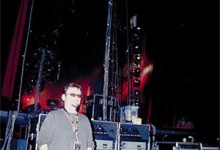
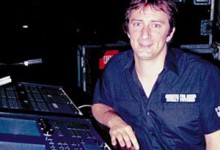
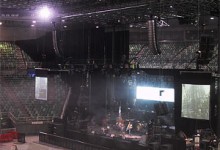
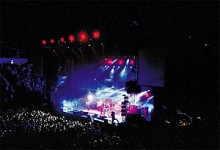
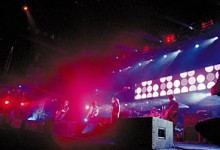
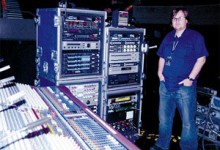
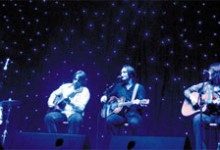
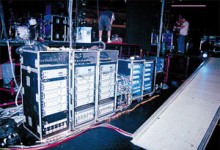
Leave a Reply